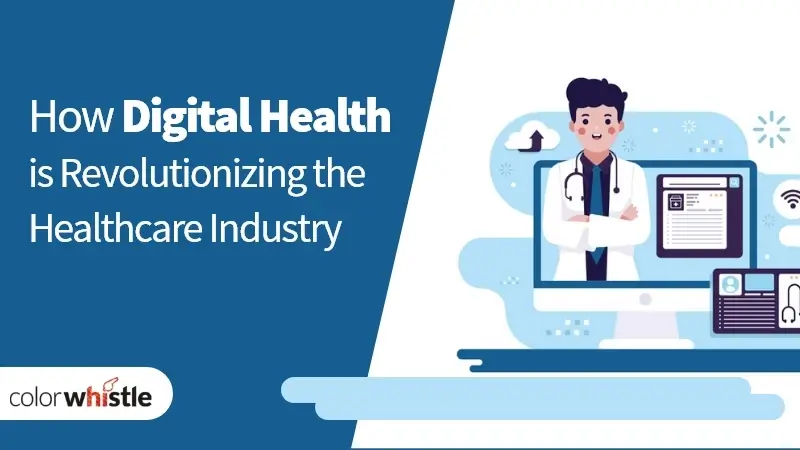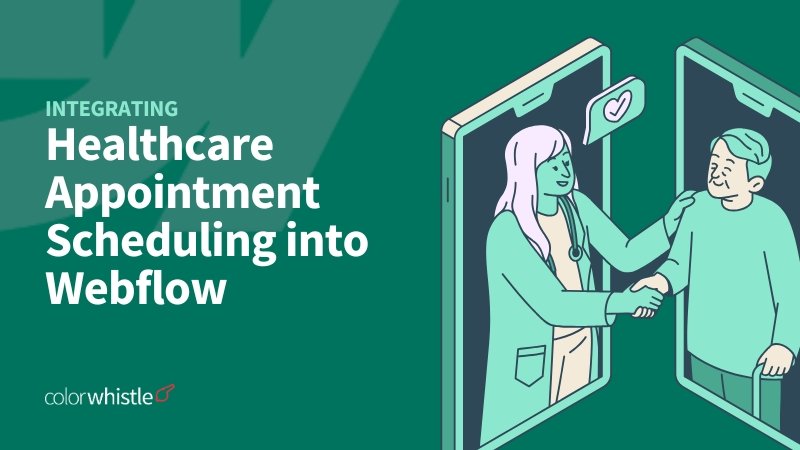If you take a closer look, digital health and healthcare are made for each other.
Experts are working behind the scenes in developing techs that are revolutionizing and streamlining healthcare services. These innovations, also known as digital health, are improving the diagnosis and treatment for chronic, short-term illnesses, and more.
Since they help to catch problems early, the cost of healthcare could also drop significantly and tailor the services to individual needs
In fact, Steve Jobs predicted digital health a long time ago. He said, “I think the biggest innovations of the 21st Century will be at the intersection of biology and technology.”
The COVID-19 situation has also been highlighting the value of digital health. From remote consultation to intuitive mobile apps, digital health solutions have helped to overcome traditional challenges and processes followed by the healthcare industry.
If you are in the healthcare industry and want to transform your standard practice into a successful digital machine, you have to first understand the modern landscape of digital health.
Keep reading as we explore more about this digital healthcare revolution.
Also Read
What is Digital Health?
Recently, HIMSS came up with a definition of digital health.
Digital health connects and empowers people and populations to manage health and wellness, augmented by accessible and supportive provider teams working within flexible, integrated, interoperable, and digitally-enabled care environments that strategically leverage digital tools, technologies, and services to transform care delivery.
In simple words, blending digital technologies (wearable devices, telemedicine) with health-related services to enhance the efficiency of healthcare delivery is digital health. The discipline makes healthcare personalized and precise.
For patients, digital health can make informed decisions about their own health, provide an option for early diagnosis of life-threatening diseases, and manage other chronic conditions outside of a traditional healthcare setup.
For healthcare providers, digital health gives a holistic view of patient health, accurately diagnoses diseases, and enhances the delivery of health services for individuals.
According to the Digital Health Technology Vision 2020 report by Accenture, 85% of health executives believe that technology has become an inextricable part of life, and 70% of global consumers expect it to become an even bigger part of their lives in the next three years.
Overall, the digitalization of healthcare is probably one of the most comfortable changes that doctors and patients are experiencing.
“Today, patients suffering from severe mental illnesses struggle with adhering to or communicating with their healthcare teams about their medication regimen, which can greatly impact outcomes and disease progression. We believe this new digital medicine could revolutionize the way adherence is measured and fulfill a serious unmet medical need in this population. – Sandra Nichols, Senior Director Of The Digital Innovation Group, AstraZeneca
What Are the Benefits of Digital Health Systems?
Easy communication – Patients need not go through the hierarchy (receptionist, attendant, assistants, etc.). Direct communication with the doctor creates a sense of trust, and the patient need not worry about revealing personal details in front of others
Quick treatment – Innovations in digital health reduce the unnecessary burden of repetitive aspects of a doctor’s job and allow them to spend more time with patient contact and monitoring
Reduced financial burden – Affordable medical technologies reduce the financial burden for both the healthcare service provider and the patient
Expanding the reach – Patients can easily book an online or virtual appointment at a convenient time. It encourages patients to take timely appointments while it is also beneficial for doctors to know how many appointments they have in a day
Clear patient profile – Doctors will have direct access to the patient’s current health status. Information such as medication allergies can be logged in which will give a clear view of the patient’s condition
Top Digital Health Trends You Need to Know
There are a number of trends in healthcare technology which is gaining momentum. Below we have summarized the digital transformation that is happening in the industry.
Telehealth
Telehealth refers to providing non-clinical services such as training, administrative meetings, and medical education in addition to clinical services through the Internet and telecommunications.
According to the World Health Organization, telehealth also includes, “Surveillance, health promotion, and public health functions.”
Telemedicine
Telemedicine is a subset of telehealth. It involves using telecommunication technology to provide clinical services to patients who are not able to come for an in-person visit.
According to a study by Market Research Future, the telemedicine market is expected to grow at a compound annual growth rate of 16.5% from 2017 to 2023.
Paubox, an email encryption software product, did detailed research and found out that many healthcare providers have started to offer telemedicine services for the first time due to the COVID-19 outbreak.
Doctors provide consultation remotely via a secure video and audio connection. Its growing disciplines include TeleRadiology. TelePathology. TeleCardiology, TelePsychiatry, and TeleEducation.
Also Read
Wearable Medical Devices
In this digital age, patients are giving more focus on prevention and maintenance. They like to know information about their health on a regular basis.
Through wearable technology devices, high-risk patients can be monitored closely and doctors can easily determine the likelihood of any major health event.
According to a recent report by Marketwatch, the wearable medical device market is expected to reach more than $27 million by 2023, a spectacular jump from almost $8 million in 2017.
Some of the most common wearable devices are heart rate sensors, exercise trackers, sweat meters, and oximeters. Click here if you like to learn more about wearable devices.
Apart from this, there is the Internet of Medical Things (IOMT) that helps with real-time data care systems, healthcare analytics, chronic disease management, medical emergency management, drug tracking, and more.
Robot-Assisted Surgery (RAS)
Robotic surgery or robot-assisted surgery helps doctors to perform many medical procedures with more flexibility and control. The technique is usually associated with minimally invasive procedures, and sometimes it is also used to perform certain traditional open surgical procedures.
Today, different types of robotized equipment such as camera arms and mechanical arms are used as surgical assistants during operations. Such types of instruments can make cleaner incisions and with less tissue damage.
Additionally, these types of equipment have opened up the possibility for remote surgery where a surgeon performs an operation without being physically present in the operation room. In fact, the COVID-19 situation has given a boost to robot-assisted surgeries in five metropolitan cities (Delhi, Mumbai, Bengaluru, Chennai, and Kolkata) in India.
3D Bioprinting
3D printing technology has already been used to create medical devices, prosthetics, and even transplants. The most popular 3D printing use cases are hearing aids and dental implants. Heart valves, blood vessels, and cartilage are also being slowly created using this method.
This technology has become popular because of the worldwide organ shortage and many opposing the testing of cosmetics and other chemicals on animals.
According to a report by Research and Markets published in June 2018, the global bioprinting market will probably reach $4.7 billion by 2025.
Virtual and Augmented Reality
Virtual reality (VR), augmented reality (AR), and mixed reality (MR), were originally a part of the entertainment field. But, they are now used in the medical field as well. This technology is used to treat stress disorders, mental health issues, and more.
According to the findings of Statistica, the healthcare segment will be the second industry to occupy a market share of 15% in the AR and VR arena and its value is expected to exceed by $5 billion by 2025.
In some cases, this technology can be an effective painkiller than drugs. For example, playing VR games can lower pain levels, reduce post-surgery patient anxiety, and help to overcome post-traumatic stress disorder.
Also Read
Data Analysis
Cloud computing, big data, and artificial intelligence help with medical data collection and analysis.
Cloud computing has simplified data access and sharing for medical organizations. Many prefer this because it helps healthcare providers to access data while maintaining (HIPAA) compliance. According to HIMSS, cloud services in healthcare will grow from $3.73 billion in 2015 to nearly $9.5 billion by 2020.
Artificial intelligence algorithms are helping to perform tasks such as EHR analysis and making a diagnosis. The power of AI is dominant in areas such as precision medicine, medical imaging, drug discovery, and genomics.
For example, top pharmaceutical and biotechnology companies are using machine learning algorithms to reduce the drug development cycle. In fact, according to an article published in Wired, AI may also help scientists find a COVID-19 vaccine.
Big data can help with identifying patterns and trends. For example, search engine queries can be monitored to find out if any region is constantly searching for a particular disease symptom. This will help hospitals to be better prepared during emergencies. Take a look at this video to find out what Professor and researcher Ronda Hughes had to say about big data’s impact on improving health services.
5G for Healthcare
The next generation of mobile network technology, 5G is all set to revolutionize the healthcare industry. Some areas in which 5G is expected to help healthcare centers meet the increasing need for digital transformation are the fast transmission of large files, expansion of telemedicine, and provide vivid experiences for healthcare professionals during training.
Even though wi-fi and 4G have helped hospital technology, 5G will have a transformative impact because of its low latency.
Blockchain
For many years, healthcare professionals have been coming up with solutions to properly handle electronic health records (EHR). Most of the medical data is being recorded in unstructured formats. This has been leading to duplicate medical records, misdiagnoses, and delayed treatments.
According to the market research report published by P&S Intelligence, blockchain in the healthcare market is expected to reach $890.5 million by 2023.
So, healthcare and pharmaceutical companies have started to invest in blockchain technology to prevent data breaches, improve the accuracy of medical records, and cut costs. Countries like Australia, UK, and Estonia have already started to experiment with blockchain technology.
Looking for Healthcare Digital Services?
Seize and experience the transformative impact of healthcare digital services with ColorWhistle.
Concluding Remarks
The main goal of digital health is to make healthcare proactive rather than reactive.
Even though some innovations mentioned in our blog are still in their infancy, overall, digital healthcare promises some mind-boggling and promising advances.
The healthcare industry has a wealth of people who are working behind the scenes to create groundbreaking technology. If they utilize the innovations listed in our blog to their full potential, the current healthcare problems can be minimized or eradicated altogether.
Do you need any guidance with your digital transformation initiatives? ColorWhistle has worked with quite a few established healthcare service providers to integrate some cutting-edge healthcare website development, mobile app solutions, telemedicine platforms and providing great healthcare digital marketing services to their global clients.
Visit our healthcare solutions page to learn more about how we can help you embrace next-generation technologies and be a part of your digital transformation journey. You can also send us a message or call us +1 (210) 787-3600 to discuss your requirements.





